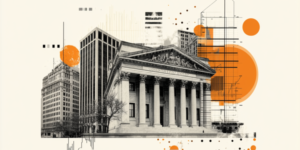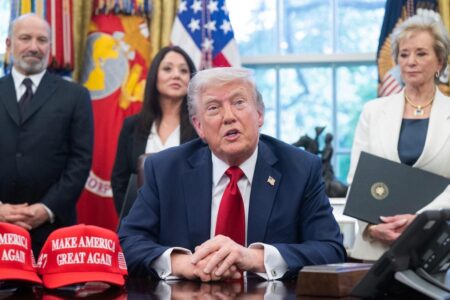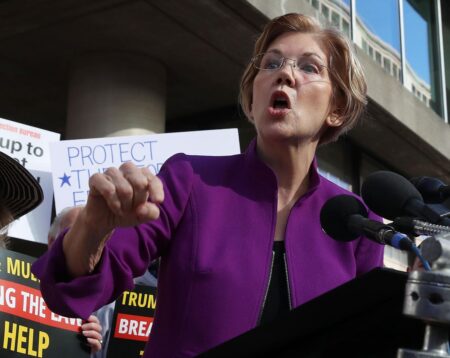Pharmacy visits can often feel like an expensive necessity. Between prescriptions, over-the-counter medications, and health-related products, the costs can add up quickly — especially as tariffs on pharmaceutical imports begin to impact drug prices.
“Tariffs on pharmaceuticals could increase the price of generic drugs by as much as 17.5%,” according to a report by the Brookings Institution, referring specifically to a proposed 25% tariff on drugs imported from India — a major supplier to the U.S.
But even in a climate of rising costs and global trade uncertainty, there are practical ways to reduce your pharmacy bill.
Here are expert-backed strategies to help you save money on your next visit to the pharmacy — without sacrificing your health or skipping essential medications.
1. Use Prescription Discount Programs
If you haven’t tried a prescription discount card like GoodRx, you could be missing out on major savings—without even switching pharmacies. GoodRx lets you compare prices at pharmacies near you and shows you which one offers the lowest price for your medication. In many cases, you can stay at your preferred pharmacy and simply show the GoodRx coupon at checkout to get the discount.
The price differences can be shocking. One pharmacy might charge $60 for a medication, while another just a few blocks away sells it for $15. GoodRx helps you cut through that confusion and pay the lowest price available. Other programs like RxSaver and SingleCare work the same way, giving you options and control over what you pay—whether it’s a generic or brand-name prescription.
Before you refill a prescription, take 60 seconds to check one of these tools. It’s one of the easiest ways to stretch your healthcare dollars without sacrificing convenience.
2. Buy Over-The-Counter Medications In Bulk
Over-the-counter staples like pain relievers, allergy medications, and vitamins might not seem expensive individually — but the cost adds up over time. One easy way to save is by buying in bulk.
For products you use often, larger quantities can offer better value and reduce the number of trips to the pharmacy. Just make sure to check expiration dates before stocking up.
3. Compare Prices at Different Pharmacies
Pharmacy prices can vary dramatically—even within the same chain. This variation often comes down to local pricing strategies, supplier contracts, and whether the pharmacy accepts discount programs. According to a report by PharmacyChecker, the price for 90 tablets of Crestor 10 mg ranged from $622.69 at a Houston pharmacy to $932.99 at one in Orlando, Florida. That’s a difference of more than $300 for the exact same medication.
That’s why it pays to shop around. For longer-term prescriptions, mail-order pharmacies can sometimes offer a lower monthly cost—another option worth exploring.
4. Look For Coupons or Rebates
Pharmaceutical companies often provide coupons and rebates for brand-name drugs, especially for patients who are paying out of pocket. Websites like RxCoupons offer printable coupons that can give you instant savings at the pharmacy. Many drug manufacturers also have patient assistance programs that help people afford their medications. Be sure to check both the manufacturer’s website and third-party coupon websites before your next visit.
5. Use Your Health Savings Account or Flexible Spending Account
If you have a Health Savings Account (HSA) or a Flexible Spending Account (FSA) through your employer, you can use those funds to pay for eligible prescription medications and certain over-the-counter products. According to IRS Publication 969, these accounts let you set aside pre-tax dollars, which can lower your taxable income and help cover out-of-pocket healthcare costs more efficiently.
Both HSAs and FSAs can be used for a wide range of qualified expenses—from prescriptions to allergy meds, pain relievers, and even menstrual care products. Leveraging these accounts for everyday health expenses is one of the easiest ways to stretch your healthcare dollars throughout the year.
6. Ask About Medication Assistance Programs
If you’re uninsured or underinsured, there are still ways to save on prescription medications. Many pharmaceutical companies offer patient assistance programs that provide drugs at low or no cost to eligible patients. These programs aren’t always widely advertised, so it’s worth asking your doctor or pharmacist if you qualify.
According to a report by the Congressional Research Service, patient assistance programs are designed to “provide free or discounted prescription drugs to low-income individuals who lack insurance coverage.” The programs are typically offered by pharmaceutical manufacturers and are aimed at helping people access costly medications they might not otherwise afford.” You can read the full report here.
Your provider can help determine which programs are available and may even assist with the application process.
7. Consider Pharmacy Substitution
Many pharmacies have programs that can save you money by offering lower-cost alternatives to your current prescriptions. With your doctor’s approval, a pharmacist might recommend a generic version or a similar medication that’s just as effective but far less expensive. If you’re taking a pricey medication, don’t hesitate to ask your pharmacist if there’s a more affordable substitute available — it could make a big difference in your monthly costs. you’re on a costly medication, ask your pharmacist if a substitution might be a good option for you.
8. Opt For A 90-Day Supply
Many pharmacies offer a discount when you buy a 90-day supply of medications instead of filling them every month. A 90-day prescription can be up to 25% cheaper than buying monthly refills, according to the Centers for Medicare and Medicaid Services. If you take a maintenance medication that doesn’t change often, consider switching to a 90-day prescription for long-term savings.
Read the full article here
















